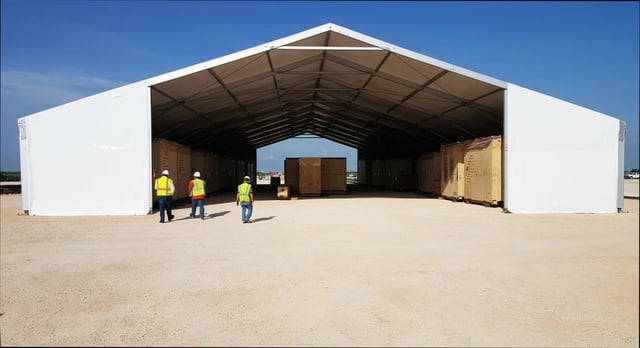Your public Authority Having Jurisdiction (AHJ) organization is responsible for reviewing, adopting, and enforcing the International Building Code (IBC) at the local level and ultimately authorizing building permits. As you might imagine, that’s no small task. According to the U.S. Census Bureau, an average of nearly 1.5 million building permits are issued in the United States each year. This includes permanent, semi-permanent, and temporary building construction.

Your public AHJ is charged with enforcing building code standards that will keep you, your staff, your customers, and surrounding businesses safe. The insurance company that underwrites the fire and property insurance for your facility also serves as an AHJ—in this case, a private AHJ. In more extreme cases, you may have upwards of four or five legitimate AHJs on a project. Each of these AHJs have influence over the approval of your final design.
Navigating the building permit and insurance approval process can be challenging. Developing a good relationship with your AHJ can go miles toward ensuring your project runs smoothly. Here are four tips to navigate the process.
- Know which code to reference. Make sure you and the AHJ are on the same page by finding out which building code applies. Is the AHJ working from the most recently adopted IBC, or are they still working from an older version? If you aren’t sure, you could be in for headaches, challenges, and misunderstandings down the road. Revisions to the IBC can take time to review and adopt at the local level, and AHJs often enforce requirements based on prior approved versions. Additionally, codes vary based on whether your structure is considered temporary or permanent. Determine how your governing agency defines permanent versus temporary structures.
- Maintain a positive, professional rapport. It can be easy to see the AHJ as a merely a function or even an obstacle to completing your project. Keep in mind the AHJ wants to work with you cooperatively. When your AHJ requests something, respond promptly and courteously, and cooperate with the request. Remember, the AHJ ultimately bases their decision on the data YOU supply.
- Ensure your temporary structure vendor can supply the necessary information. The AHJ will require certain building reports as part of the review process. An experienced vendor will be able to supply a stamped engineering report and other pertinent information, such as lease duration and information on utility services, like electricity or water, which may be attached to the structure. You are responsible for obtaining the necessary permitting for your structure, but working with the right vendor can make the process much easier.
- Ask permission, not forgiveness. Don’t risk your project by bending or breaking the rules. For example, if you initially advise your AHJ your structure will be up for two months, don’t try to “get away” with keeping your structure up for six months without approval. You could face major fines, a shut-down of your operation, and, as a known “rule-breaker,” you could also face ongoing challenges with your AHJ down the road. Instead, contact your AHJ in advance. A proactive approach gives your AHJ a chance to help you with steps to take to accommodate your extended timeframe.
Navigating the permit and approval process can be challenging. But, a cooperative attitude, basic knowledge of your building code, and an experienced structure vendor can help you keep your project on time and on track.
Get started preparing today.
Be on the ready. Whatever your project needs are, please contact us and a project manager will work with you to begin your own turnkey project. It will not take long before you realize the very real advantages and intrinsic value of a turnkey project that is delivered and installed on your site quickly and ready for immediate use.
